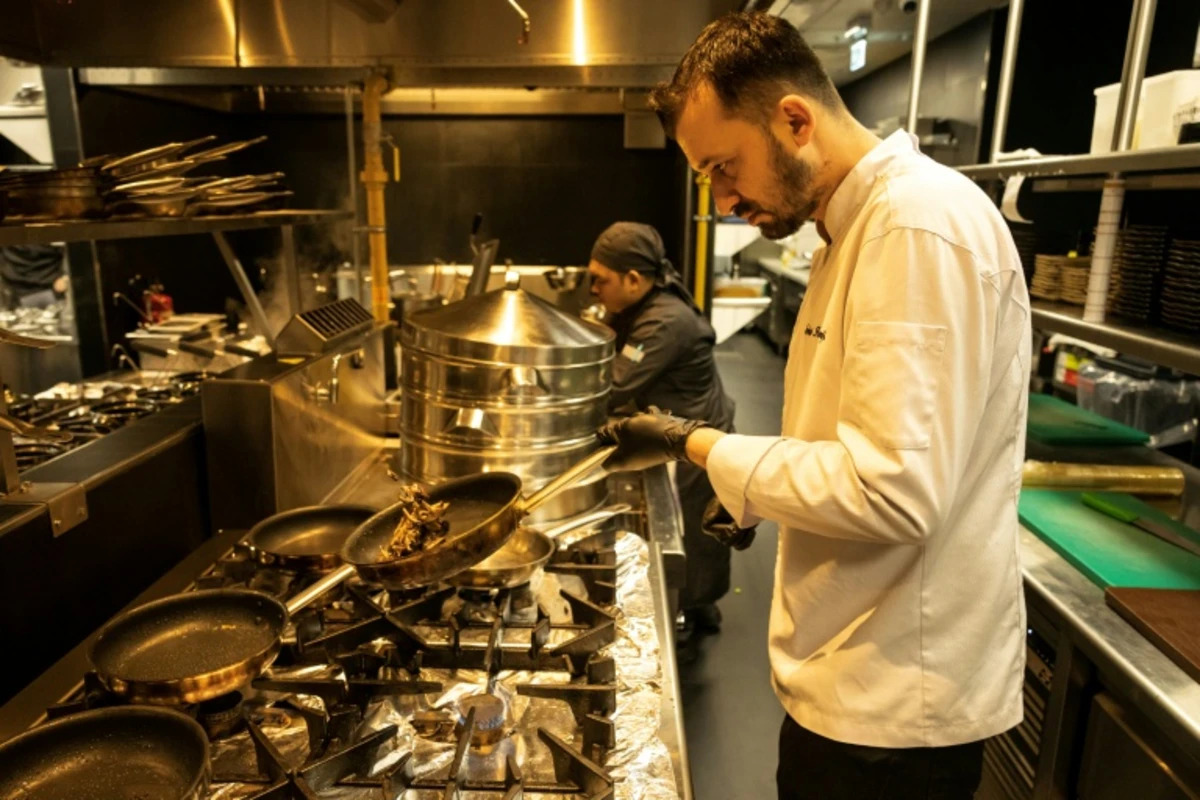- New Year: How Each Zodiac Sign Can Reset Their Life in the First 90 Days of 2026 The Times of India
- Brace Yourself, Leo: 7 Triggers 2026 Will Hit You With, And How To Stay Grounded Times Now
- Astrological Forecast 2026: Spiritual Growth Ahead As…
Blog
-
New Year: How Each Zodiac Sign Can Reset Their Life in the First 90 Days of 2026 – The Times of India
-

Lithuanian researchers convert textile waste into low-emission cement
Researchers at Kaunas University of Technology (KTU) in Lithuania are exploring how waste textiles can be converted into alternative fuels or integrated into cement and concrete mixes to cut pollution and support circular-economy…Continue Reading
-

‘Dinosaur Tartare’ And Holograms: Dubai AI Chef Sparks Awe And Ire
A Dubai restaurant has opened that prides itself on having the world’s “first AI chef”, the latest ostentatious dive into new technology in a city obsessed with being on the cutting edge of the future.
The Barron’s news department was not involved…
Continue Reading
-

Dubai AI chef sparks awe and ire
A Dubai restaurant has opened that prides itself on having the world’s “first AI chef”, the latest ostentatious dive into new technology in a city obsessed with being on the cutting edge of the future.
The Emirati city has become increasingly…
Continue Reading
-
China's factory activity shrinks again in November, services activity cools – Reuters
- China’s factory activity shrinks again in November, services activity cools Reuters
- Chinese Factory Activity Slump Reaches Longest Stretch on Record Bloomberg.com
- China November non-manufacturing activity contracts for first time in nearly three years Deccan Herald
- China’s factory activity shrinks again in November, services activity cools By Reuters Investing.com
- China’s manufacturing activity improves, as PMI ticks up to reach 49.2 in November Global Times
Continue Reading
-

Jenna Ortega Returns to the Marrakech Red Carpet in Liquid Satin
Jenna Ortega returned to the Marrakech International Film Festival, staying with the minimal mood of her Night One dress while trading its firm structure for a liquid satin build.
The ivory-blush gown’s neckline was the…
Continue Reading
-
Anger simmers over Hong Kong deadly blaze as Beijing warns against "disruption" – Reuters
- Anger simmers over Hong Kong deadly blaze as Beijing warns against “disruption” Reuters
- Photos from Hong Kong’s deadliest fire in decades AP News
- Fire alarms at HK high-rise were ‘defective’ Dawn
- Three days of mourning begin after Hong…
Continue Reading
-

AJ Lee, Rhea Ripley, Iyo Sky, Alexa, Charlotte Win at WWE Survivor Series WarGames
The team of Rhea Ripley, Iyo Sky, Alexa Bliss, Charlotte Flair and AJ Lee defeated Asuka, Kairi Sane, Nia Jax, Lash Legend and Becky Lynch in a women’s WarGames match at WWE Survivor Series on Saturday.
Lynch was left alone for the heels after…
Continue Reading
-

Over 60 Black Friday Anker Deals Are Still Live. Add Them to Your Cart While You Can
Black Friday may have wrapped up, but as we head into Cyber Monday, Anker still has plenty of excellent deals still available. The brand is known for dependable and budget-friendly tech, and the holiday discounts make its lineup even more…
Continue Reading
-

Sri Lanka flood death toll rises to 159, with many more missing
The death toll from floods and mudslides in Sri Lanka has risen to 159, with more than 200 people missing, as the country grapples with one of its worst weather disasters in years.
More than 20,000 homes have been destroyed, sending 108,000 people…
Continue Reading